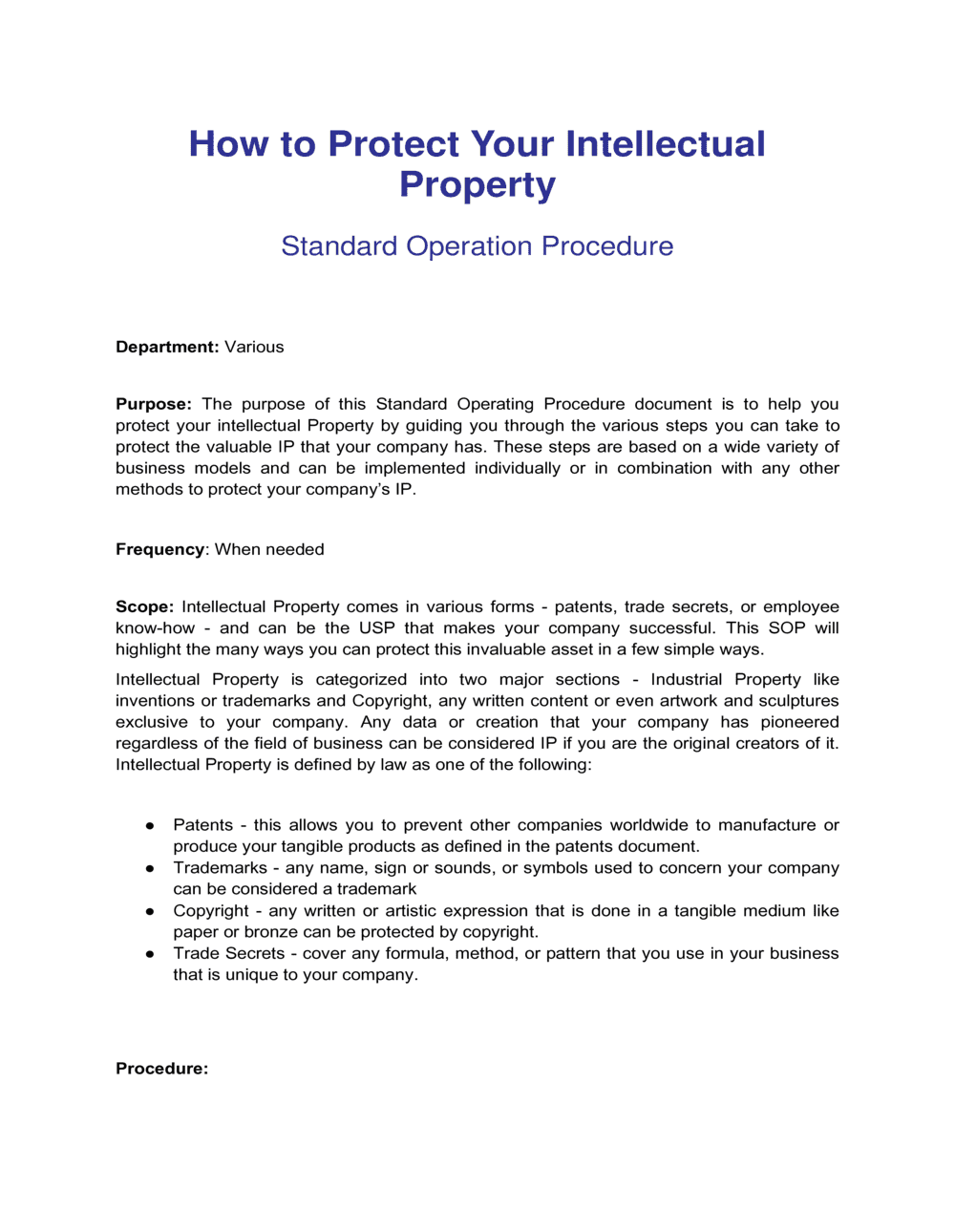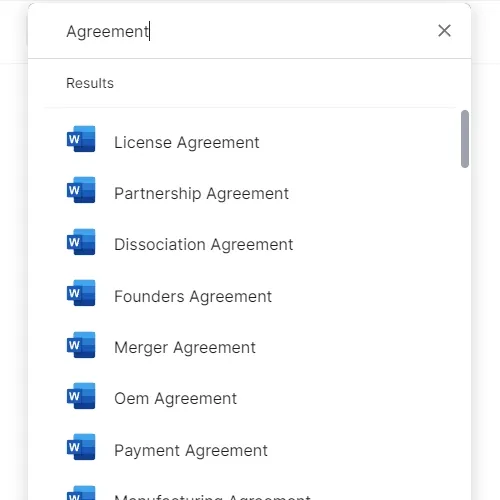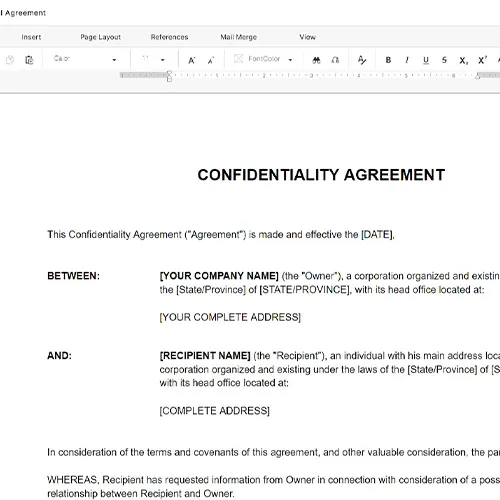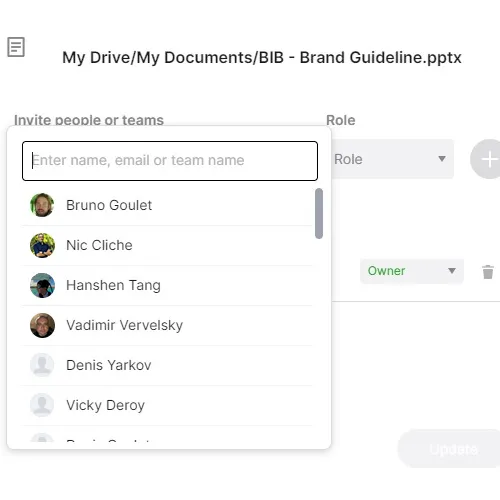How to Protect Your Intellectual Property

Sample of Document Content
This how to protect your intellectual property template has 3 pages and is a MS Word file type listed under our business plan kit documents.
How to protect your intellectual property
How to Protect Your Intellectual Property Standard Operating Procedure Department: Various Purpose: The purpose of this Standard Operating Procedure document is to help you protect your intellectual Property by guiding you through the various steps you can take to protect the valuable IP that your company has. These steps are based on a wide variety of business models and can be implemented individually or in combination with any other methods to protect your company's IP. Frequency: When needed Scope: Intellectual Property comes in various forms - patents, trade secrets, or employee know-how - and can be the USP that makes your company successful. This SOP will highlight the many ways you can protect this invaluable asset in a few simple ways. Intellectual Property is categorized into two major sections - Industrial Property like inventions or trademarks and Copyright, any written content or even artwork and sculptures exclusive to your company. Any data or creation that your company has pioneered regardless of the field of business can be considered IP if you are the original creators of it. Intellectual Property is defined by law as one of the following: Patents - this allows you to prevent other companies worldwide to manufacture or produce your tangible products as defined in the patents document. Trademarks - any name, sign or sounds, or symbols used to concern your company can be considered a trademark Copyright - any written or artistic expression that is done in a tangible medium like paper or bronze can be protected by copyright. Trade Secrets - cover any formula, method, or pattern that you use in your business that is unique to your company. Procedure: Understand what Intellectual Property you have. You must identify the intellectual Property that you have in your company so that you can create measures to protect this asset. By communicating this information to all employees regularly you will already create a ring-fence around your intellectual assets. If your company has a Chief Security Officer, they should be meeting with your senior staff to ensure that they have all the details of potential intellectual Property. You can carry out an Intellectual Property Audit annually to keep your records and protection updated. Understand where your Intellectual Property resides. On a day to day basis your company produces various mediums that could contain your IP. This includes: Printers, Scanner, Copiers, and Fax - The paper you produce might contain IP and you should have a system in place to protect the paper used in the office like filing procedures that are monitored regularly. File Sharing and Cloud-Based Devices - Any IP shared online via file sharing systems or even resides on the cloud needs to have sufficient security measures so that your competitors can not access the data stored there. Employee Devices - Your employees use your IP most often in their day to day duties. They might use this data on their personal devices to demo for clients etc
Reviewed on

Sample of Document Content
This how to protect your intellectual property template has 3 pages and is a MS Word file type listed under our business plan kit documents.
Sample of our how to protect your intellectual property template:
How to Protect Your Intellectual Property Standard Operating Procedure Department: Various Purpose: The purpose of this Standard Operating Procedure document is to help you protect your intellectual Property by guiding you through the various steps you can take to protect the valuable IP that your company has. These steps are based on a wide variety of business models and can be implemented individually or in combination with any other methods to protect your company's IP. Frequency: When needed Scope: Intellectual Property comes in various forms - patents, trade secrets, or employee know-how - and can be the USP that makes your company successful. This SOP will highlight the many ways you can protect this invaluable asset in a few simple ways. Intellectual Property is categorized into two major sections - Industrial Property like inventions or trademarks and Copyright, any written content or even artwork and sculptures exclusive to your company. Any data or creation that your company has pioneered regardless of the field of business can be considered IP if you are the original creators of it. Intellectual Property is defined by law as one of the following: Patents - this allows you to prevent other companies worldwide to manufacture or produce your tangible products as defined in the patents document. Trademarks - any name, sign or sounds, or symbols used to concern your company can be considered a trademark Copyright - any written or artistic expression that is done in a tangible medium like paper or bronze can be protected by copyright. Trade Secrets - cover any formula, method, or pattern that you use in your business that is unique to your company. Procedure: Understand what Intellectual Property you have. You must identify the intellectual Property that you have in your company so that you can create measures to protect this asset. By communicating this information to all employees regularly you will already create a ring-fence around your intellectual assets. If your company has a Chief Security Officer, they should be meeting with your senior staff to ensure that they have all the details of potential intellectual Property. You can carry out an Intellectual Property Audit annually to keep your records and protection updated. Understand where your Intellectual Property resides. On a day to day basis your company produces various mediums that could contain your IP. This includes: Printers, Scanner, Copiers, and Fax - The paper you produce might contain IP and you should have a system in place to protect the paper used in the office like filing procedures that are monitored regularly. File Sharing and Cloud-Based Devices - Any IP shared online via file sharing systems or even resides on the cloud needs to have sufficient security measures so that your competitors can not access the data stored there. Employee Devices - Your employees use your IP most often in their day to day duties. They might use this data on their personal devices to demo for clients etc
Easily Create Any Business Document You Need in Minutes.

Download or open template
Access over 3,000+ business and legal templates for any business task, project or initiative.

Edit and fill in the blanks
Customize your ready-made business document template and save it in the cloud.

Save, Share, Export, or Sign
Share your files and folders with your team. Create a space of seamless collaboration.


